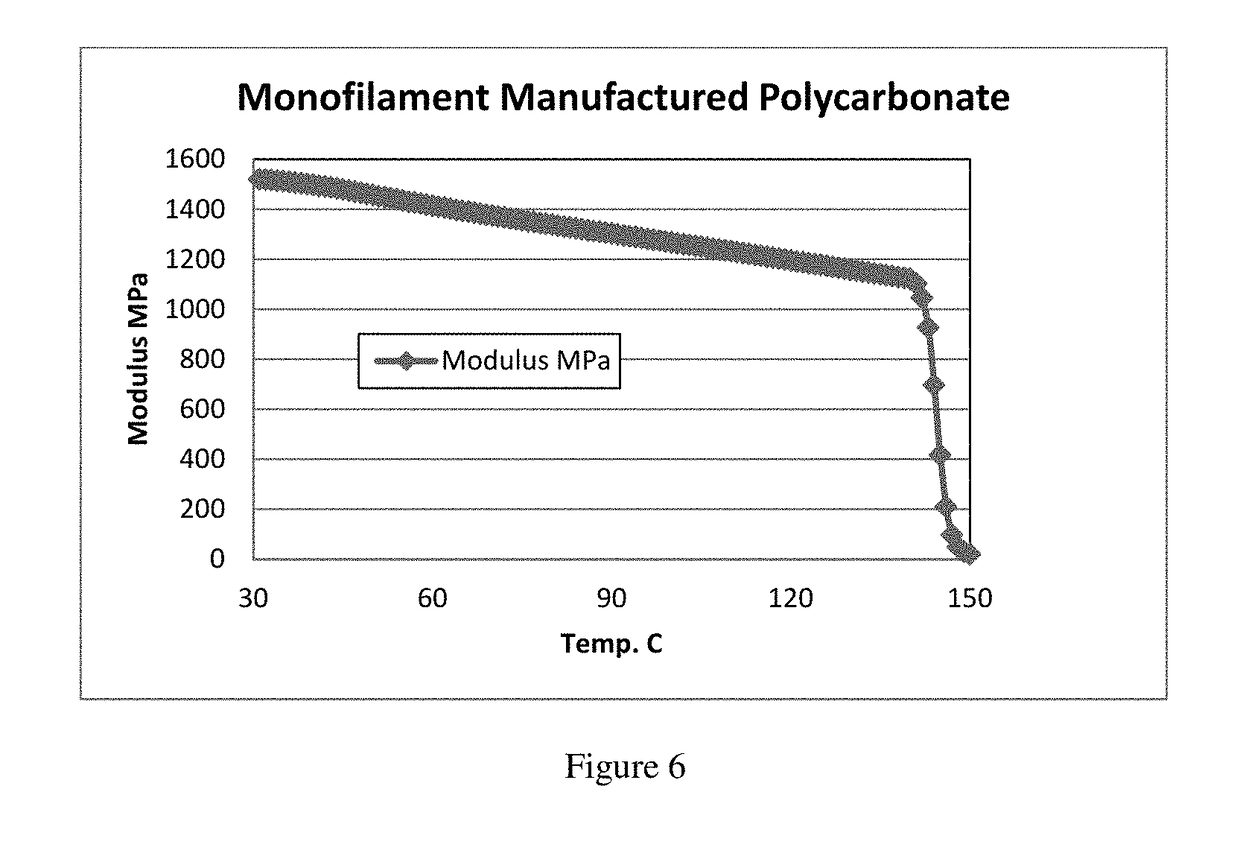Reduced density article
a density article and density reduction technology, applied in additive manufacturing processes, manufacturing tools, coatings, etc., can solve the problems of slow cycle time and significantly higher cost of materials used for each build, and achieve the effect of reducing density
- Summary
- Abstract
- Description
- Claims
- Application Information
AI Technical Summary
Benefits of technology
Problems solved by technology
Method used
Image
Examples
examples
[0045]The following examples illustrate the present invention, but are not meant to be limitations to the scope thereof. Numbers designate examples of the invention; comparative examples are designed by letters.
[0046]ASTM test parts were made using a Stratasys Fortus System 400 MC machine (for example as described in U.S. Pat. Nos. 5,968,561 and 5,866,058) using a round polycarbonate monofilament of 1.75 mm diameter. The bisphenol A polycarbonate (PC) had a weight average molecular weight (Mw) of 22,000 with 0.03 wt. % tris di-tert butyl phenyl phosphite, 0.15 wt. % pentaerythritol tetra stearate (PETS) processing aid and 2 ppm of solvent violet 36 and 1 ppm of pigment blue 60 colorants. This polycarbonate was made using a standard interfacial process. It had a p-cumyl phenol end cap. The phase transfer catalyst was triethylamine, the solvent was methylene chloride. pH was controlled by addition of sodium hydroxide. The polymer solution was washed with acid and water and isolated by...
embodiment 1
[0069]A reduced density article of manufacture comprising a thermoplastic polycarbonate composition, the reduced density article of manufacture having (1) a density as measured by ASTM D792-00 of 80% to 99% by weight of a similar solid standard injection molded article having no voids and (2) a micro structure as measured by optical microscopy containing from 1% to 20% by volume of voids wherein at least 80% of the voids are high aspect voids and less than 20% of the voids are spherical voids with a diameter of 10 to 100 microns; wherein the polycarbonate thermoplastic material comprises at least 50 mole % bisphenol A having a weight-average molecular weight (Mw) of 10,000 to 50,000, a glass transition temperature (Tg) from 130 to 180 degrees C., a phenolic OH end group content of less than 50 ppm, a halide group content below 100 ppm, and a diaryl carbonate content below 1% by weight; and wherein the reduced density article of manufacture is made by a monofilament additive manufact...
embodiment 2
[0070]The reduced density article of manufacture of Embodiment 1 wherein the reduced density article of manufacture further comprises at least 50 ppm of a triaryl phosphate having a weight average molecular weight (Mw) of at least 300.
PUM
| Property | Measurement | Unit |
|---|---|---|
| diameter | aaaaa | aaaaa |
| surface roughness | aaaaa | aaaaa |
| cusp angle | aaaaa | aaaaa |
Abstract
Description
Claims
Application Information
 Login to View More
Login to View More - R&D
- Intellectual Property
- Life Sciences
- Materials
- Tech Scout
- Unparalleled Data Quality
- Higher Quality Content
- 60% Fewer Hallucinations
Browse by: Latest US Patents, China's latest patents, Technical Efficacy Thesaurus, Application Domain, Technology Topic, Popular Technical Reports.
© 2025 PatSnap. All rights reserved.Legal|Privacy policy|Modern Slavery Act Transparency Statement|Sitemap|About US| Contact US: help@patsnap.com



